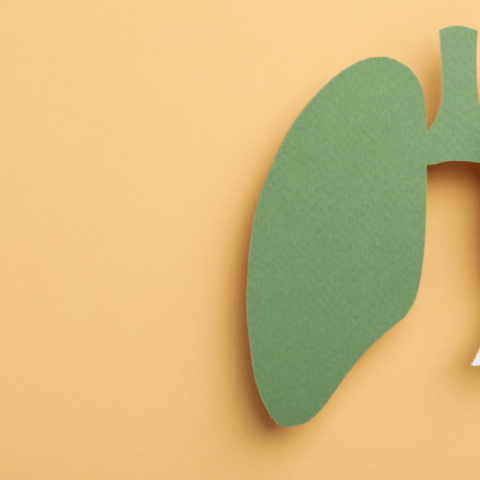
Lung cancer is the third most common cancer in the United States and leading cause of cancer-related deaths. In 2023, the American Cancer Society estimates 1,340 new cases of lung cancer in Nebraska, with 630 expected deaths. Taking proactive steps such as not smoking, radon testing, and regular screenings can reduce your risk of getting lung cancer.
How to Reduce Your Risk
-
Don’t Smoke or Quit smoking. Cigarette smoking is the primary risk factor for lung cancer. No matter how long you have used tobacco, quitting as soon as possible can reduce your risk for cancer. Visit www.smokefree.gov for resources on quitting.
-
Avoid Secondhand Smoke. Secondhand smoke is known as the smoke that comes from other people's cigarettes, cigars, or pipes. Making sure your home and car are smoke free is a great way to reduce secondhand smoke.
-
Get Your Home Tested for Radon. Radon exposure is the second leading cause of lung cancer. Radon is a colorless, odorless, and tasteless gas found naturally in rocks, soil, and water. It can enter buildings through cracks and accumulate, posing a risk, particularly for smokers. It is recommended to have your home tested for radon and take necessary steps to help reduce radon exposure such as installing a radon mitigation system, if needed. Visit Radon Test Kits to learn about available test kits.
-
Be Careful at Work. Follow health and safety guidelines, such as wearing a mask to avoid breathing in harmful substances that may cause cancer.
Recognize Lung Cancer Symptoms
Lung cancer often doesn't show symptoms until later stages. Common symptoms include:
-
Coughing that gets worse or doesn’t go away
-
Chest pain
-
Shortness of breath
-
Wheezing
-
Coughing up blood
-
Feeling very tired all the time
-
Loss of appetite
-
Unexplained weight loss
Get Screened
The U.S. Preventive Services Task Force (USPSTF) recommends annual lung cancer screening for people who:
-
Are between 50 and 80 years old, and
-
Have a 20 pack-year or more smoking history, and
-
Smoke now or have quit within the past 15 years.
A pack-year means smoking on average one pack of cigarettes each day for one year. For instance, an individual could accumulate a 20 pack-year history by smoking one pack daily for 20 years or two packs a day for 10 years. Talk to your doctor about when to begin screening, available screening options, and possible risks of screening. Screening can help find lung cancer at an earlier stage, when treatment may work better and help improve survival rates.
Sources:
Lung Cancer, Centers for Disease Control and Prevention
Tobacco and Cancer, Centers for Disease Control and Prevention
Radon, United States Environmental Protection Agency
Lung Cancer, Nebraska Cancer Coalition
Smoke Free, National Cancer Institute
Radon Test Kits, Nebraska Department of Health and Human Services
Lung Cancer: Screening, The U.S. Preventive Services Task Force
Tags:


